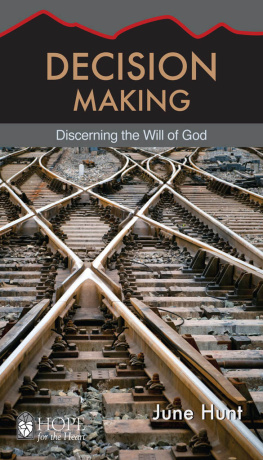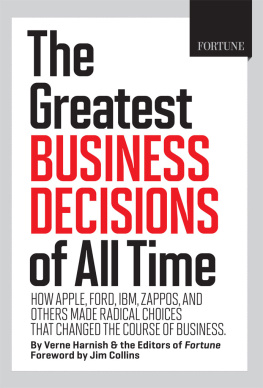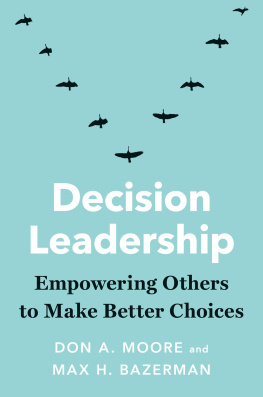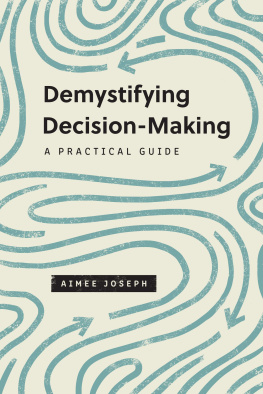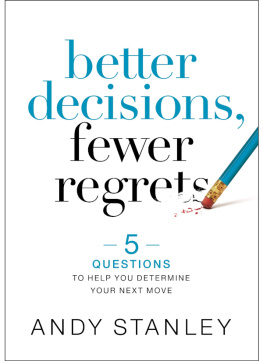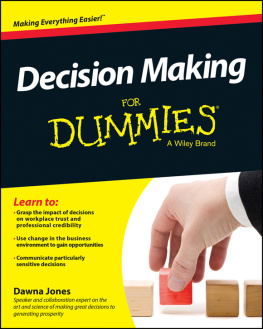Week 1
Bruce Ismay Reviews the Designs of Titanic
How a Series of Seemingly Insignificant Decisions Proved Catastrophic
I cannot conceive of any vital disaster happening to this vessel. Modern shipbuilding has gone beyond that.
CAPTAIN EDWARD SMITH, COMMANDER, TITANIC
On a brisk Belfast day in January 1910, design considerations concerning the worlds largest ship were being deliberated.
Decisions made that day by Bruce Ismay contributed to the deadliest peacetime maritime disaster in history twenty-seven months later when Titanic struck an iceberg and 1,514 people died.
Titanic was a floating hotel boasting the highest standards of luxury, including a swimming pool, squash courts, and ship-to-shore communication. She was, said Ismay, the latest thing in the art of shipbuilding.
As managing director of the White Star Line, Ismay was offering an extravagant seagoing experience in response to his competitionsCunard Lineemphasis on speed. On July 29, 1908, Ismay approved drawings for the Olympic-class ocean liner and two days later signed letters of agreement authorizing construction, which began on March 31, 1909. Alexander Carlisle, construction company Harland & Wolffs chief designer, led the project. When finished, Titanic measured 882 feet (269 m) long with a maximum breadth of 92 feet 6 inches (28.19 m). Her height from keel to bridge was 104 feet (32 m) and she weighed 46,328 gross register tons.
Two seemingly insignificant decisions made in a matter of minutes that January day in 1910 would become catastrophic.
Ismays decision to enlarge the grand staircase lowered bulkheads separating each of Titanics sixteen watertight compartments, creating a lowerand fasterflooding threshold in the ships forward compartments where the collision occurred.
Though 1910 ships had quadrupled in size since 1908, safety regulations remained unchanged. Carlisle anticipated more lifeboats would be required on Titanic and presented plans that January day for forty-eight lifeboats. While the twenty lifeboats aboard Titanic exceeded requirements, maximum capacity was 1,176 people, half Titanics crew and passengers. Ismay approved Carlisles plan to install davits for additional lifeboats, but decided against cluttering the deck with twenty-eight additional lifeboats unless regulations changed.
Every organization is susceptible to catastrophe, though risks may seem unlikely or insignificant. When did you last test your assumptions? Where are you vulnerable?
At New Yorks Waldorf-Astoria Hotel four days after Titanic sunk, Ismay testified before an inquiry led by U.S. senator William Alden Smith that absolutely no money was spared in her construction.
Money wasnt the primary concern. Shortages of time, talent, and materials were, and each figured into Titanics demise.
With Titanics construction behind schedule, hiring more riveters to meet the March 20, 1912, departure was an important agenda item at Harland & Wolffs October 28, 1911, board meeting. Steel rivets were stronger but were scarce and required machines for installation; Titanics enormous curved bow prevented this machinerys use. Wrought iron rivetsthree million of themfastened Titanics hull plates. Metallurgy specialists examining forty-six rivets retrieved from the wreck found three times more slag than modern wrought iron: Titanics rivets were brittle, prone to breaking under pressure. The 1985 discovery of Titanics wreck revealed her sinking was caused not by a large gash from the iceberg but rather six narrow slits where bow plates fitted with these weaker wrought iron rivets popped like champagne corks as the ship grazed the iceberg.
Ismay believed that had Titanic met the iceberg directly the ship might not have sunk, but added, it would have taken a very brave man to have kept his ship going straight on an iceberg.
With passenger safety taken for granted, Titanics captain steamed at full speed despite six ice warnings. The American inquiry concluded that too much arrogance and not enough common sense proved fatal: No general discussion took place among the officers; no conference was called to consider these warnings. The speed was not relaxed, the lookout was not increased, and the only vigilance displayed by the officer of the watch was by instructions to the lookouts to keep a sharp lookout for ice.
When Second Officer David Blair left Titanic before it sailed, he inadvertently took with him the key to the crows nest locker where the binoculars were stored. Crewman Frederick Fleet, on duty as a lookout in the crows nest at the time of the collision, testified he requested binoculars but was told there is none.
Suppose, Senator Smith asked Fleet, you had had glassescould you have seen this black object [the iceberg] at a greater distance?
We could have seen it a bit sooner, Fleet replied.
How much sooner?
Well, enough to get out of the way.
Outdated standards, inadequate procedures, and lack of preparation sealed the passengers fate.
Sixty minutes passed between the collision and launching the lifeboats. As each minute passed, four hundred tons of seawater poured into Titanic. She sank 160 minutes after the collision.
What procedures, systems, and safeguards are in place to detect changeslarge and smallthat can wreck your plan? When were these systems last tested? How will you address significant failures in your business plan and disasters in your workplace?
Inquiries held in America and Great Britain concluded long-standing practices deemed safe were followed.
What was a mistake in the case of the Titanic, the British inquiry warned, would without doubt be negligence in any similar case in the future. New maritime regulations mandated more lifeboats, lifeboat drills, and round-the-clock wireless operation on passenger ships.
Eyewitnesses reported most passengers acted bravely, with men honoring the women and children first code.
Bruce Ismay, vilified for leaving the ship, was absolved by the British inquiry: No other people were there at the time. There was room for him and he jumped in. Had he not jumped in he would merely have added one more life, namely, his own, to the number of those lost. Ismays reputation never recovered. He was forty-nine.
Stanley Lord, commanding Californian, less than 19 miles (30.58 km) away from Titanic, ignored distress signals and took no action. His conduct was deemed reprehensible.
Arthur Henry Rostron, commanding Carpathia, steaming 58 miles (93.34 km) through ice fields at night and rescuing 706 survivors, was deserving of the highest praise.
How would you and your leaders respond to adversity?
As the captain of your ship, you must watch for and respect threats that could spell disaster.
Week 2
Alfred Nobel Reimagines His Legacy
How Seeing His Future Caused the Merchant of Death to Create a Legacy of Peace
I intend to leave after my death a large fund for the promotion of the peace idea, but I am skeptical as to its results.
ALFRED NOBEL
Few of us have the opportunity to read our obituary while were still alive.
What Alfred Nobel read in an April 1888 Paris newspaper struck him like a scene from Charles Dickenss A Christmas Carol when the Ghost of Christmas Yet to Come visits Scrooge and reveals people gloating over the penny-pinching misers death.
In seeking to report the April 12 death of Alfreds fifty-six-year-old brother Ludvig, the newspaper erroneously exchanged Ludvigs life story with Alfreds, told that morning under the headline The Merchant of Death Is Dead. Alfred Nobel was best known as the inventor of dynamite.
Next page


